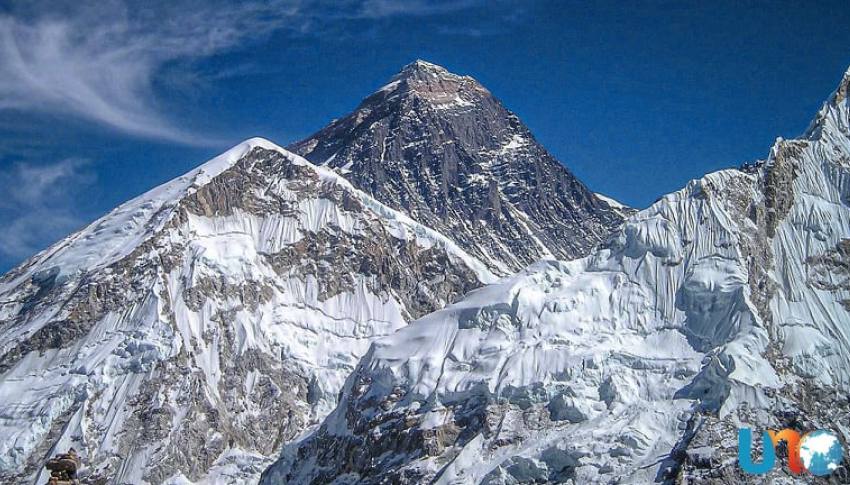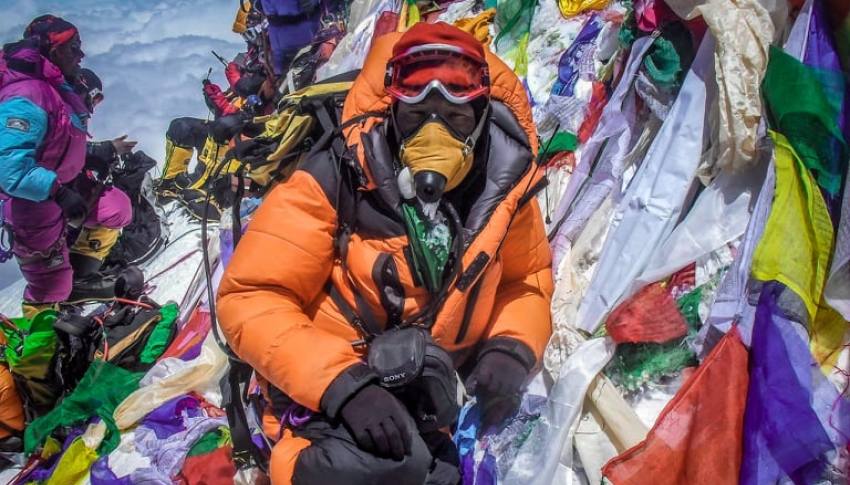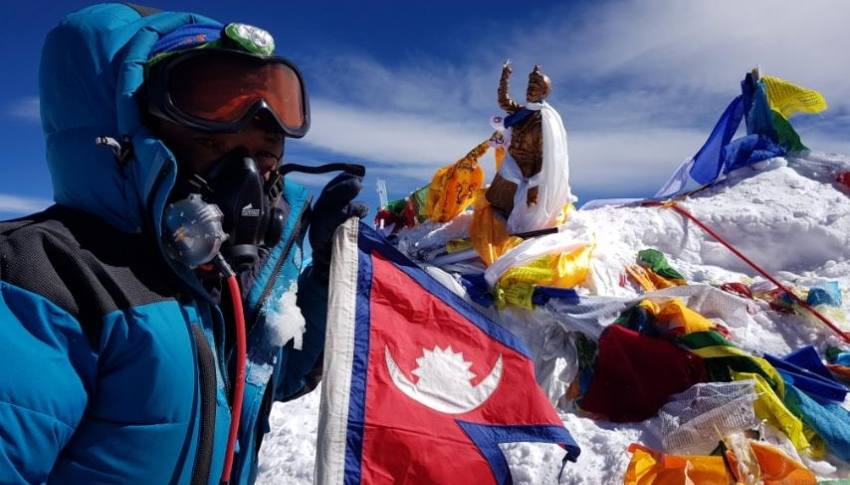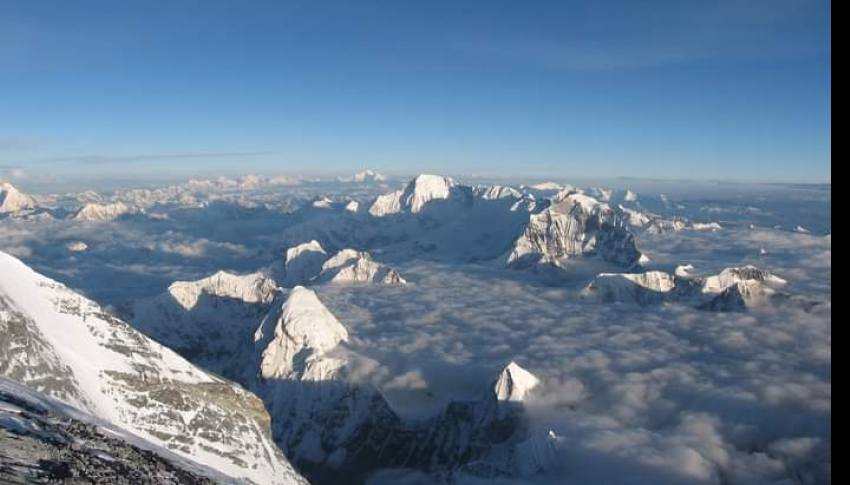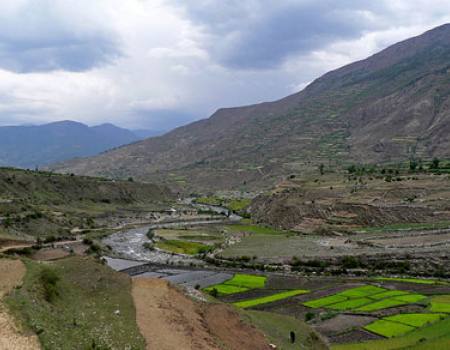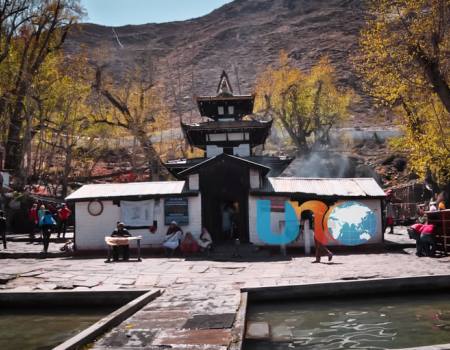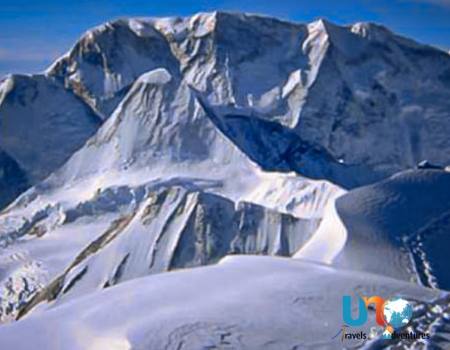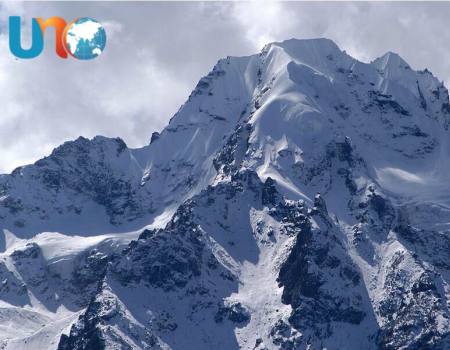Conquering the Roof of the World: The Ultimate Everest Expedition
Embarking on an Everest Expedition is the ultimate adventure, attracting mountaineers and adventurers from all corners of the globe. Mount Everest, standing tall at a majestic height of 8,848 meters (29,029 feet), holds an allure that has captivated human imagination for centuries. Its towering presence and the formidable challenges it presents make it the pinnacle of mountaineering achievement.
The Everest Expedition is a test of courage, skill, and endurance, as climbers brave the treacherous slopes and unpredictable weather conditions of the world's highest peak. It requires meticulous planning, physical conditioning, and mental fortitude to navigate the daunting ascent and reach the summit. The journey begins at the legendary Mt. Everest Base Camp, located at an altitude of approximately 5,380 meters (17,600 feet). Here, climbers acclimatize to the high altitude, prepare their equipment, and receive necessary training and guidance from experienced mountaineering professionals.
The ascent to the summit of Mount Everest is a grueling and physically demanding endeavor. Climbers must navigate through the treacherous Khumbu Icefall, negotiate steep and icy slopes, and traverse the precarious Hillary Step. The extreme altitude, thin air, and harsh weather conditions add to the challenges, requiring climbers to be in peak physical condition and possess exceptional mountaineering skills.
While the allure of conquering Mount Everest is undeniable, it is essential to approach the expedition with caution and respect for the mountain. Safety should always be the top priority. Choosing a reputable expedition company with experienced guides and a proven safety record is crucial. Uno Expedition, a renowned and trusted name in mountaineering, offers professional guidance, state-of-the-art equipment, and extensive support to climbers undertaking the Everest challenge. Their team of expert guides ensures that climbers are well-prepared, trained, and equipped for the demanding journey ahead.
The cost of an Everest Expedition can vary depending on several factors, including the operator, the duration of the expedition, and the level of support provided. It is important to consider not only the financial cost but also the value of the expertise, safety measures, and services provided by the expedition company. Uno Expedition prioritizes safety, professionalism, and sustainability, ensuring that climbers have the best possible experience while minimizing the impact on the delicate mountain environment.
Undertaking an Everest Expedition in 2023 on 2024 promises to be a life-changing experience. The journey to the summit is not only a physical challenge but also a test of mental resilience and determination. The reward for those who reach the top is a sense of accomplishment like no other, standing atop the world and witnessing breathtaking panoramic views that stretch as far as the eye can see.
However, it is crucial to remember that reaching the summit is not the sole measure of success. The journey itself, the personal growth, and the profound connection with nature are equally significant. Mount Everest demands respect, humility, and a deep appreciation for the power and beauty of the natural world.
Preparing for an Everest Expedition requires months, if not years, of physical training, mental preparation, and logistical planning. Building cardiovascular endurance, strength training, and high-altitude acclimatization are essential components of the preparation process. Additionally, climbers must gather the necessary gear, including proper clothing, equipment, and provisions for the journey.
Climbing Mount Everest is not without risks. Altitude sickness, avalanches, extreme weather, and the physical and mental toll of the climb pose significant challenges. It is vital to have a comprehensive understanding of the risks involved and to follow the guidance and recommendations of experienced guides throughout the expedition.
Standing atop the summit of Mount Everest is a moment of unparalleled triumph, but it is also a humbling experience. It is a testament to the indomitable human spirit, the pursuit of personal goals, and the relentless
quest for adventure and exploration. The views from the summit offer a glimpse into a world that few have witnessed, with a panorama of snow-capped peaks, deep valleys, and the vast expanse of the Himalayas stretching in all directions.
The Everest Expedition is not only about the physical and personal challenges but also about the opportunity to connect with the Sherpa people and the rich cultural heritage of the region. It is a testament to human determination, a pursuit of personal limits, and a deep reverence for the natural world. With meticulous planning, proper training, and the support of experienced guides, climbers can navigate the challenges, push their boundaries, and stand atop the roof of the world. The Everest Expedition is an experience that transforms lives, leaving an indelible mark on the hearts and minds of those who undertake this remarkable adventure. The Khumbu Valley, with its vibrant monasteries, prayer flags fluttering in the wind, and warm hospitality, offers a unique cultural experience that complements the physical adventure.
What is Mount Everest?
Mt. Everest, “Roof of the Earth” is known as Sagarmatha in Nepal and Chomolungma in Tibet. Mt. Everest is the highest geographic location on earth standing at a height of 8,848 meters (29,028 feet). Mount Everest attracts many climbers, including highly experienced mountaineers. As of 2019, over 300 people have died on Everest many of whose bodies remain on the mountain.
Mount Everest is the highest peak on Earth, located in the Himalayas. Climbing Everest is a challenging and dangerous endeavor that requires significant physical and mental preparation. Many climbers have lost their lives attempting to reach the summit, and the mountain is known for its unpredictable and harsh weather conditions. Despite the risks, climbing Everest is a dream for many adventurers and thrill-seekers, and reaching the summit is considered a major accomplishment in the world of mountaineering. The beauty and majesty of Everest have inspired countless explorers and adventurers throughout history, and it remains one of the world's most iconic and awe-inspiring natural wonders.
Reaching Everest Base Camp and Everest is more than just climbing and trekking, it is a life-changing experience and some see it as a journey close to achieving Nirvana. Located in the northeastern province of Nepal, this region is in a world of its own with vast glaciers, icefalls, the highest mountains, deep valleys, precarious settlements, and hardy people challenging the harshest conditions thrown at them by nature in the thin air of high altitude.
The first ascent of Mt. Everest
The Mt. Everest expedition is leading lights of British mountaineering that were soon probing the corrugated foothills east of Kathmandu to find a suitable approach to the Khumbu. The ubiquitous Bill Tilman and American Charles Houston traced a way to the foot of the Khumbu icefall in 1950 and a year later Eric Shipton’s team went through the icefall.
Mt. Everest Expedition, the British, however, were not alone in their endeavor and all. But lots of great prizes when the Swiss expedition came close to success in 1952. The following spring an expedition led by Colonel John Hunt renewed the British assault on Everest. This was a strong expedition gathered from the finest mountaineers of Britain and New Zealand. On the first summit bid, Charles Evans and Tom Bourdillon reached the South Summit, laying open the way to the top. Two days later on 29th May 1953 Edmund Hillary and Tenzing Norgay were the first people to stand on the summit of the highest mountain in the world.
They brought to a close what Norman Dyhrenfurth called “an Edwardian quest for the poles of the earth” and made an auspicious start to the new Elizabethan age as the news reached London for the coronation of Queen Elizabeth II.
Why UNO Travels?
Uno Travels and Adventure is a private limited company with a long history of 20 years. We are qualified by the national government and we are active. From the Himalayas to Terai's lowest field, we can manage an eco-friendly package. With big ambitions in the field, we can walk with clients from all over the world. All our decisions are the result of pasts experiences and hard work in the mountaineering field. On the latest activity, we have a record for Mt. Everest and we have a new concept built for outdoor activity "T3"
Is UNO Travels different?
As we have mentioned before our company prioritizes more about the process before the result with the experience of decades with our valuable clients.
- We make sure we book the right accommodation for you.
- We make sure our clients get to enjoy their fullest with beautiful views and environment.
- We make sure you are healthy and safe for the decided destination.
- We make sure you are informed about the place, history, and culture.
- We make sure a trip with us will bring you satisfaction
- We make sure you have an experienced guide. Specifically hand-picked out by the father and son duo to be precise a duo with a minimum of a decade of experience in tourism, and record breakers.
Why does UNO have an interest in cleaning?
Director of Uno Travels and Adventure.
Whereabout Route and when to climb Mt. Everest?
To climb Everest there are two main routes, the southeast ridge from Nepal and the northeast ridge from Tibet, as well as thirteen other less frequently climbed routes. Of the two main routes, the southeast ridge is technically easier and is the more frequently-used route. It was the route used by Hillary and Tenzing in 1953. This was, however, a route decision dictated more by politics than by design as the Tibetan border was closed to foreigners in 1949.
Most attempts are made during April and May before the summer monsoon season. A change in the jet stream at this time of year also reduces the average wind speeds high on the mountain. While attempts are sometimes made after the monsoon in September and October but the additional snow deposited by the monsoon makes climbing even more difficult.
Trip Highlights
Destination: Mt. Everest Expedition
Group Size: Min. 2, Max.10-person or more
Maximum alt: 8,848m
Grade: Mountaineering Expedition
Season: Spring
Accommodation: Lodge and Camping
Duration: 63 Days
The suggested itinerary is a guideline. Every evening, the expedition leader will discuss the best options with you related to your fitness, health, and interest. The itinerary remains flexible to meet your desires and needs.
In the setup we combine, we will be providing you with Full Board Service for the whole expedition.
[Every effort will be made to keep to the above itinerary, but as this is adventure travel in a remote mountain region, we cannot guarantee it. Weather conditions, road conditions, vehicle breakdowns, and the health of climbers, porters, and staff can all contribute to changes. The Expedition Leader will try to ensure that the trip runs according to plan, but an easygoing nature will be an asset! ]
Service Packages - Expedition
Summit Service - Pro
The Pro package provides you with a fully organized expedition including all organizational arrangements, a completely professional, experienced staff & crew, all needed equipment, and all services, and luxuries that make your entire expedition as comfortable as possible. The staff takes care of all tasks and activities you are not required to help with.
Summit Service - Basic
The Basic package provides you with a fully organized expedition including all organizational arrangements, a small professional, experienced staff & crew, and essential equipment & services only, without the luxuries of the Pro package. Although professionally organized, this package is much more basic and adventurous you are required to help with all tasks and activities.
Service Packages - Base Camp
Base Camp Service - Basic
The Basic package provides you with all services up to the base camp and in the base camp (or ABC) for the entire expedition. This includes all organizational arrangements, a small professional, experienced staff & crew, essential equipment & services only, without the luxuries of the Pro package. Although professionally organized, this package is much more basic and adventurous; You are required to help with all tasks and activities. Above base camp, you organize everything you need yourself and you are responsible for your safety, equipment, food, and strategy.
Base Camp Service - Pro
The Pro package provides you with all services up to the base camp and in the base camp (or ABC) itself for the entire expedition. This includes all organizational arrangements, a completely professional, experienced staff & crew, all needed equipment, and all services and luxuries that make your trip to the base camp and in the base camp itself as comfortable as possible. Above base camp, you organize everything you need yourself and you are responsible for your safety, equipment, food, and strategy.
Outline Itinerary
- Day 01:Arrive at Kathmandu airport
- Day 02:Stay in Kathmandu City for official formalities and last-minute preparation (1,350m)
- Day 03:Fly to Lukla Airport (2,840m) and trek to Phakding (2,610m)
- Day 04:Trek to Namche Bazaar (3440m)
- Day 05:Rest day for Acclimatization and exploration around Namche.
- Day 06:Trek to Tengboche(3860m)
- Day 07:Trek to Dingboche(4410m)
- Day 08:Rest day for Acclimatization and exploration of the monastery.
- Day 09:Trek to Lobuche(4910m)
- Day 10:Trek to Gorak Shep (5153m)
- Day 11:Trek to Everest Base Camp (5363m)
- Day 12:12-55 Mt. Everest Expedition Period
- Day 56:Cleaning up Base Camp (If you are interested join us not necessary)
- Day 57:Trek to Lukla (2,800m)
- Day 61:Fly to Kathmandu from Lukla Airport(0:35 hours)
- Day 62:Sightseeing Tour in Kathmandu Valley
- Day 63:Departure
Detail Itinerary
- Day 1Arrive at Kathmandu airport You will be met & greeted by our airport representative who will be on standby to pick you up and transfer you to your hotel. After you’ve refreshed, you can go for a stroll down the street to get familiar with your surroundings.
Window shopping would be a good start to looking around—your first overnight in the valley of temples & cows.
- Day 2Stay in Kathmandu City for official formalities and last-minute preparation (1,350m)These two days have been spent in Kathmandu for the final preparation of the Climb. Meet other team members, complete official and government formalities, and final gear check and load. Upon your interest, an optional Kathmandu sightseeing can be arranged on these days.
We will have a trip alignment and your trip leader will give you a brief about your climb before we head on our journey. - Day 3Fly to Lukla Airport (2,840m) and trek to Phakding (2,610m)After morning breakfast, Drive to the domestic airport. Nepal's magnificent nature is seen from the window of panoramic ranges, after only 35min in flight, we will reach the airstrip built by Sir Edmund Hillary and the Sherpas in the mid-1960s.
We begin the trek by descending towards the Dudh Kosi River, here we meet the main trail to Namche Bazaar, just above Chaurikharka at 2,713m. Walking is easy. After passing through the small village of Ghat at 2,550m, it’s a short walk to Phakding. Overnight at Phakding - Day 4Trek to Namche Bazaar (3440m) We will continue our journey by walking along the Dudhkoshi river with pine and various forest. After small settlements like Zapute, Toktok, Benkar, and Chumoa, we will reach Monjo. This is known as the gateway to the Sagarmatha National Park. After completing all the necessary national park formalities, we will enter Sagarmatha National Park.
Lowering down from the park, we will arrive at the river. Crossing through suspension bridges you will continue your ascent, gradually leading Jorsale. From here it is 2.30hrs ascend to Namche with two viewpoints on the way. If it's clear weather You will enjoy a mesmerizing view of Mt Everest, Lhotse, Nuptse, Thamserku, and the Kusum Khangru mountains. Overnight at Namche - Day 5Rest day for Acclimatization and exploration around Namche.We stay for two nights in Namche to help acclimatize as we are now over 3,000m in height. To help your body adapt to the high altitude we go for a walk following the golden rule of "climb high, sleep low". We have several options for day walks from Namche. The first option is the long walk to Thame village at 3,800m and back to Namche taking between 7 to 8 hours. If you prefer to have a shorter walk you can visit the Everest View hotel also at 3,800m. This takes around 4 hours and you can visit Khumjung village too. You should listen to your body and do not push too hard on the walk. Having time to rest at high altitudes is an important part of the acclimatization process. We have enough guides so, if required, we can organize both of these walks for different members of the group.
Thame valley is less visited by trekkers as it is away from the main Everest Base Camp trail. We leave Namche on the high trail that contours out the village high above the Bhote Khosi river. We walk through the rhododendron forest and then into open pastures. We pass through the small hamlets of Samsing and Thamo. It is a beautiful valley with its traditional houses and terraced fields. We are following the old Tibetan trade route. In the past, Tibetans traveled over the Nangpa La to trade in Namche. Before reaching Thame the path descends to a bridge with water roaring below. On the rock, there are large wall paintings of Guru Padmasambhava.
The path then climbs to the picturesque village of Thame with a backdrop of snow-covered peaks. The late Sherpa Tenzing Norgay's house is near the top of the village where he lived with his first wife. Apa Sherpa who has climbed to the summit of Mount Everest twenty-one times also lives in Thame village. Above the village is an important monastery over 600 years old. After lunch at a teahouse lodge, we make our return trip on the same trail back to Namche. - Day 6Trek to Tengboche(3860m) After a pleasant rest day at Namche, you will be heading towards Tengboche next. You will gradually walk northeast along a mountainside. You will find villages along your journey, and the locals will greet you. Photographs can be taken with their permission.
After a few hours of walking, and a few breaks, you will come across a dense pine forest. You need to walk for about 2.5 hours straight through the dense pine forest. Upon arriving at Tengboche, you will rest at a hotel. - Day 7Trek to Dingboche(4410m) We will walk along the glacier water of the Dudh Koshi River. The route offers views of Mt. Everest, Nuptse, Lhotse and, Thamserku, and Ama Dablam Mountains. Our journey continues through the colorful forest of blooming rhododendron to Sanasa. The region is rich in wildlife including musk deer and colorful pheasants. In Sanasa lies the junction point. One of the paths leads us to the Gokyo valley while the other branches off to Everest Base Camp. We will take a sharp climb to Tengboche monastery which is the largest in the Khumbu region. The journey rewards us with close-up views of many surrounding mountains. We will visit the monastery and walk through the forest of birch and rhododendron to Deboche where we will stay overnight.
- Day 8Rest day for Acclimatization and exploration of the monastery.This is a day to haul up and rest without being idle. We can stroll around the village and get pally with the local folks with some interesting conversations. This will give us deep insights into the lifestyles and cultures of the local folks in this region. At the same time, we can also relish the landscapes that surround us and we can also catch up on some reading. Our acclimatizing gets a further boost with our hike to Nagartsang peak (5067m). As we top it with gasping breath we soon realize the gritty climb was worth the go; the rewards are as lovely as it comes with the natural beauty that greets us for our efforts.
- Day 9Trek to Lobuche(4910m) Today we start with a climb to the Chorten trial. This is a gentle climb. We climb the ridge behind the village next to the large Chorten. The trail flattens out and we walk across the high grassy plateau above the Pheriche valley. Before Dughla we cross a bridge over a stream and then arrive at the two lodges located here.
From Dughla the steep trail climbs onto the terminal moraine of the Khumbu glacier. We pass a poignant place where there is a line of memorials in tribute to the climbers who have died on Everest. The panorama of the peaks from this point is beautiful. From the memorial, the route descends a little and follows the side of the valley to Lobuche. Here there is a cluster of teahouse lodges. Taboche and Nuptse Peaks are particularly spectacular from Lobuche when it's a clear day. - Day 10Trek to Gorak Shep (5153m) An early start we follow the undulating trail along the western side of the Khumbu valley. The views today are magnificent with towering snowy peaks. The conical peak of Mount Pumori soon comes into view.
After Lobuche pass (5,110m) the trail is rockier as we walk along the lateral moraine of Khumbu glacier. After about 2 to 3 hours from Lobuche, we descend to a sandy basin to reach the lodges at Gorakshep. Overnight at Gorak Shep. - Day 11Trek to Everest Base Camp (5363m) A couple of hours of walking through Gorak Shep and walking further through rocky dunes and moraine will lead us to Everest Base Camp. We will meet the rest of our team at Base Camp.
- Day 1212-55 Mt. Everest Expedition PeriodRest is required.
After several days at Everest Base Camp, we will also do training in ice seracs of the lower Khumbu Glacier while checking climbers’ equipment and reviewing climbing and rescue techniques.
Info where our Camps will be present:
Camp 1: Top of the Khumbu Icefall (6,000m/19,685ft)
Camp 2: Advanced Base Camp (6400m /21,000ft)
Camp 3: Halfway up Lhotse Face (7300-7500m/24,500ft)
Camp 4: South Col (7,900m/26,000ft)
The acclimatization phase begins with the rotation of higher camps. After completing the acclimatization, retrace back to base camp and wait for the perfect weather window.
For the acclimatization, please note that the acclimatization program may differ during the expedition period as each climber adapts differently to an altitude. Your expedition leader will suggest you the best as per your conditions.
The route is technically a trekking route with little danger once you pass the Khumbu icefall. However, there are a few crevasses and seracs bridged by ladders and a couple of short ice cliffs around Camp 3, along with rock sections protected with fixed lines. The complications of high altitude sickness can be fatal. The weather at the mountain can be unpredictable and changeable at times.
The glacier between Camp 1 and Camp 2 is flat. The large crevasses close to Camp 1 get fixed with ladders. Camp 1 is a resting and transition area before moving to Camp 2 you ascend through Camps 1 and 2, and our team will stay overnight at camp 2.
When it is done following up with the weather report we advance according to precaution.
Oxygen cylinders will be used after Camp 3 for an easy ascent. We provide 8 bottles of oxygen to each climber for maximum flow. From Camp 4, following the southeast ridge, we will make it to the South summit from where we will advance towards Hillary's step before climbing to the summit.
After our successful climb, we retrace Lukla for a flight back to Kathmandu via Pheriche, Namche, and finally to Lukla. - Day 56Cleaning up Base Camp (If you are interested join us not necessary)https://tinyurl.com/4mw8avyf
- Day 57Trek to Lukla (2,800m)Trek via Pheriche, Namche, and finally Lukla.
On our last night at Khumbu, we celebrate our successful completion of the expedition with our Sherpa guides and porters who we’ve got to know so well & are now good friends - Day 61Fly to Kathmandu from Lukla Airport(0:35 hours)We will take an early morning flight from Lukla to Kathmandu. We will be transferred to the hotel in a private vehicle in Kathmandu. Take leisure and soothe your aching limbs from a long and tiring climb.
- Day 62Sightseeing Tour in Kathmandu Valley Enjoy a leisurely day. You are on your own. Participating in a day tour in Kathmandu is a good plan. You can also go for shopping in Thamel, a tourist hub where you can buy souvenir items like handicrafts and arts to your family. A celebratory dinner in the evening will mark the successful end of the expedition, we will relish a farewell dinner to celebrate our successful climb. While enjoying our dinner, we will also be entertained by the cultural dance performed by the locals.
Please do not hesitate to let us know if you would like to extend your stay. Kindly email us for more details on extensions. - Day 63DepartureToday is the last day of your trip to Nepal. Therefore, as per your flight schedule, you will be transferred to the Tribhuvan International Airport in Kathmandu.
However, if you are planning to extend your holiday in Nepal please kindly email us, UNO Travel and Adventure will help you to arrange short trips or popular sites exploration as per your choice.
We are open, Book now to complete this amazing journey and we shall make the arrangements.
What's Includes:
- Applicable only for Expedition through Southern Route.
- Flight to Lukla Airport from Katmandu, & back after an expedition.
- Porters/Yaks to carry equipment and food all the way to BC & back.
- Full board accommodation en route to/from Base camp.
- One head Climbing guide/Sardar.
- Cook & kitchen boys at BC.
- Experienced & skillful High Altitude Climbing Sherpa (One Sherpa for two Clients)
- POISK Oxygen (08 bottles per client & 06 per Sherpa).
- Mask & regulator mask set (must be returned after the Expedition).
- Highly preferable meals at BC complete with hot drinks & normal beverages.
- Exported High altitude food for higher camps (ready-to-eat food).
- Best quality Tents at BC single or twin sharing as per the client's desire.
- All necessary kitchen equipment.
- Best quality Dining tent with enough no of tables & chairs, plus inside the tent, we
- Gas Heaters in Dining Hall.
- Complete carpeting inside the dining tent.
- Comfortable & portable wooden toilet at the base camp.
- A nice portable wooden shower room with hot water at the base camp.
- High-quality high-altitude tents for above-BC use.
- Necessary climbing hardware gears with fixed ropes.
- Enough EPI (high altitude) gases with burners for higher camp's use.
- Oxygen with the regulator set for medical purposes.
- Radio walkie-talkie set to each client with base station & permits cost.
- Satellite phone for emergency purposes ($ 4 chargeable for a personal call).
- Generator/solar panel with accessories for recharging & power supply purpose.
- Gammon bag for medical purposes.
- Insurance of all local team members.
- All airport/hotel transfers.
- Day tour program around KTM.
- Celebration meal & pre-briefing.
- Expedition blessing Puja arrangement at Katmandu and Base camp.
- Last but most important COMPLETE SETUP INTERM/MIDDLE CAMP with Sleeping bags,
- sleeping mattress, food & drinking stuff & cooking crew.
- Service of Local Climbing Sherpas
- Pumori Permit including Liaison Officer
- Kathmandu Accommodation
- Return airfare to Lukla
- Expedition cargo charge
- Fully catered trek to Base Camp and back
- Full supported acclimatization climbs of Lobuche peak
- Base Camp food
What's Excludes:
- Personal insurance (Suggested to have evacuation policy as well)
- Nepal's visa.
- Major meals in Kathmandu.
- Personal climbing gears.
- Personal nature’s expenses.
- Cost of emergency evacuation
Enquiry for reasonable cost details
Trip Note
Everest Expedition is safe and the well-being of our groups is of paramount importance to us. All our trips are led by qualified professional guides who are well-trained by Nepal Government. Our responsibility is to ensure your comfort and safety as we take your holiday. In this regard, we work honestly and effectively to provide you with the Himalayan experience that suits your interest. We encourage you to question us freely and contribute to the planning stages of your adventure in the trekking period.
Quick Inquiry
Trip Facts
- Transportation:
- Meals:Breakfast + Lunch + Dinner
- Accommodation:Lodge + Camping
- Altitude:8,848m
